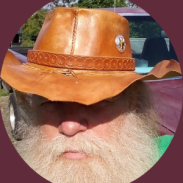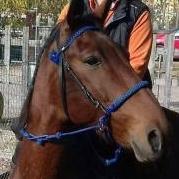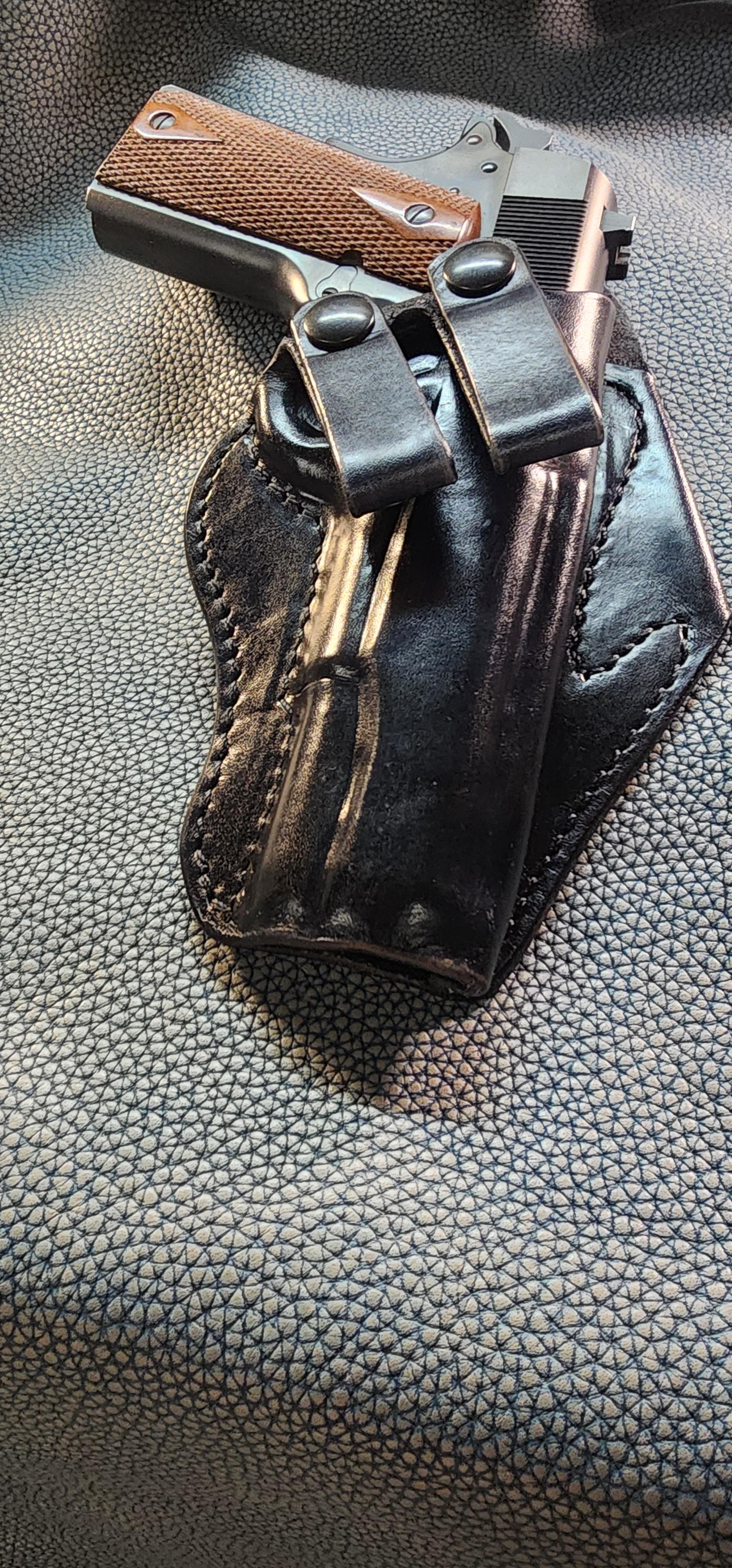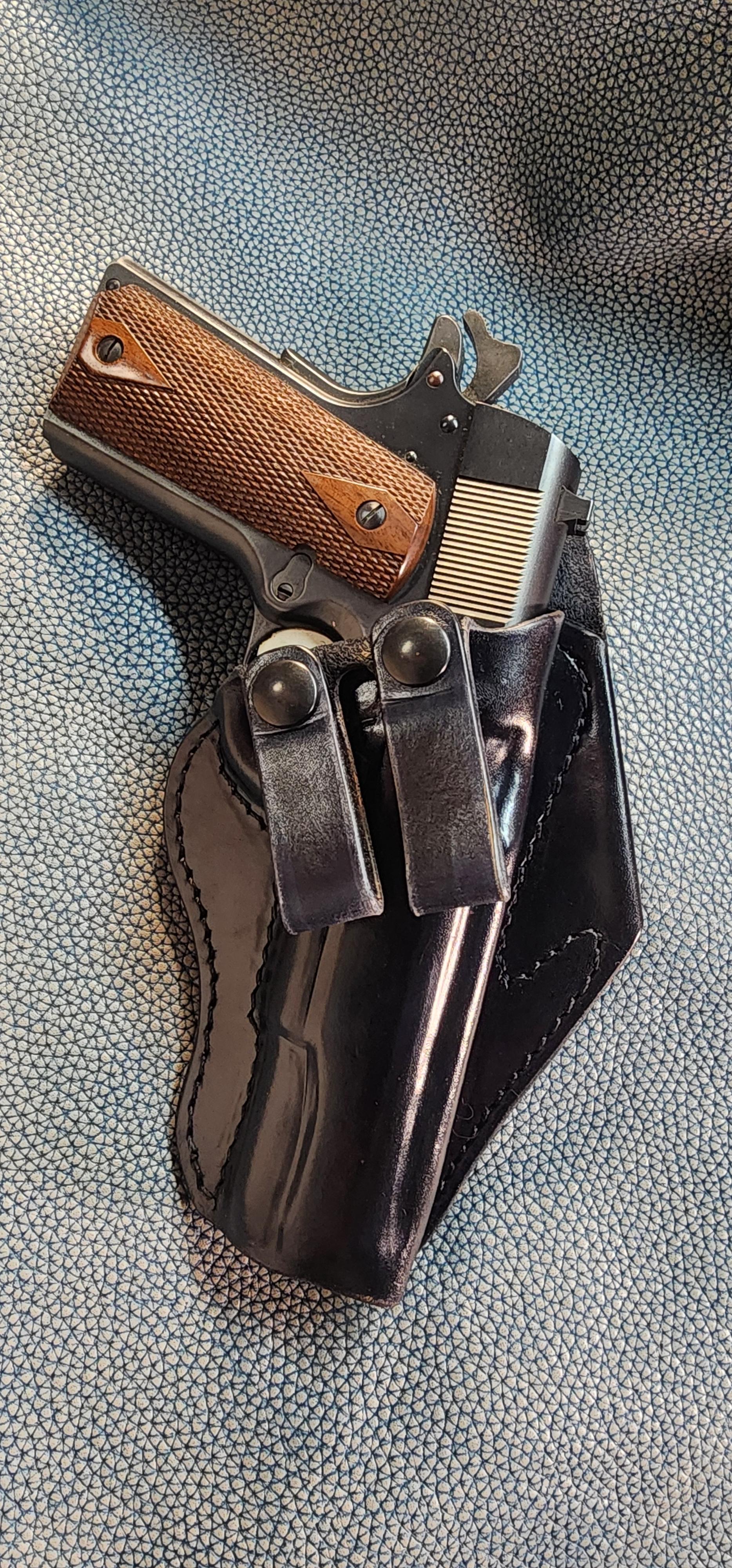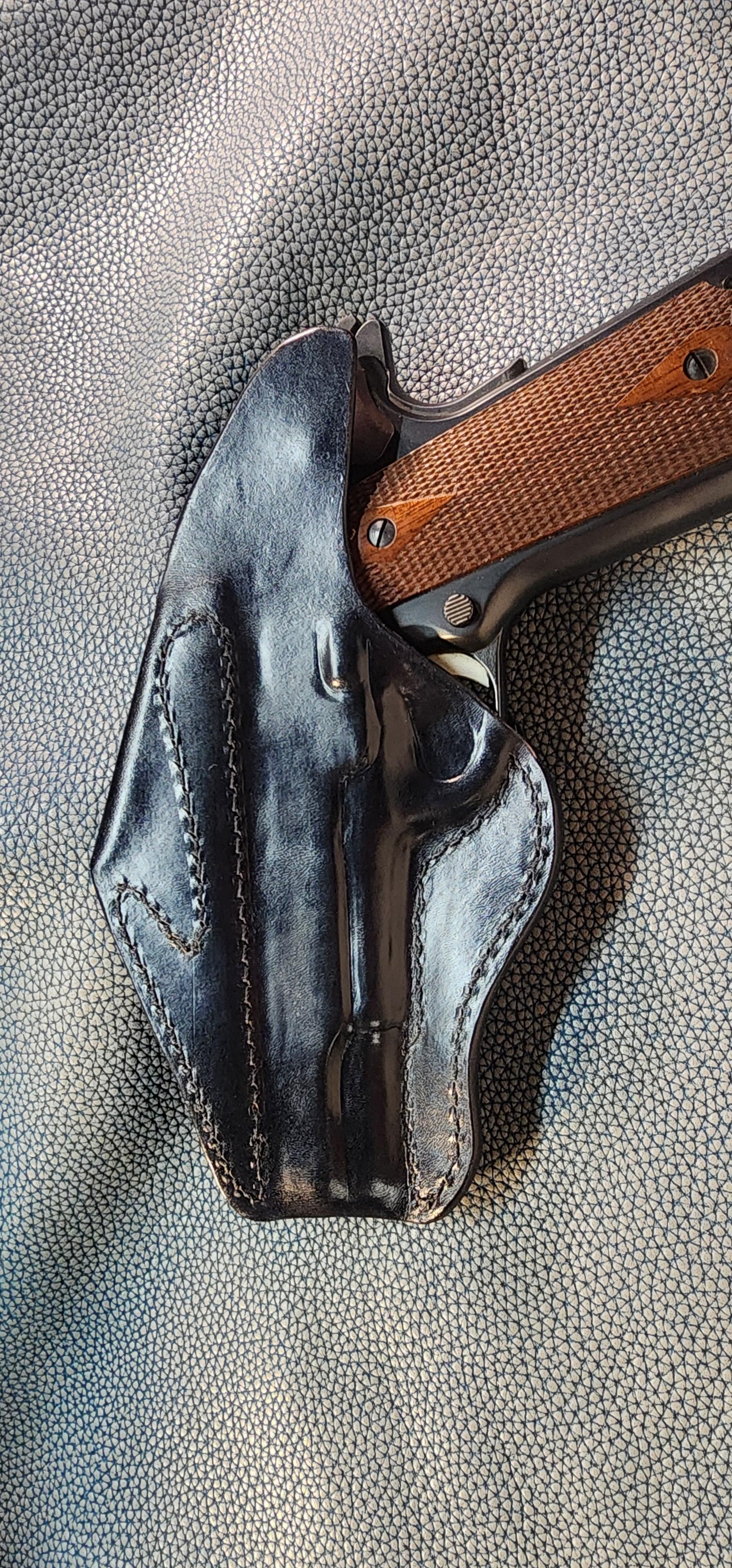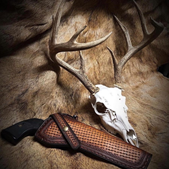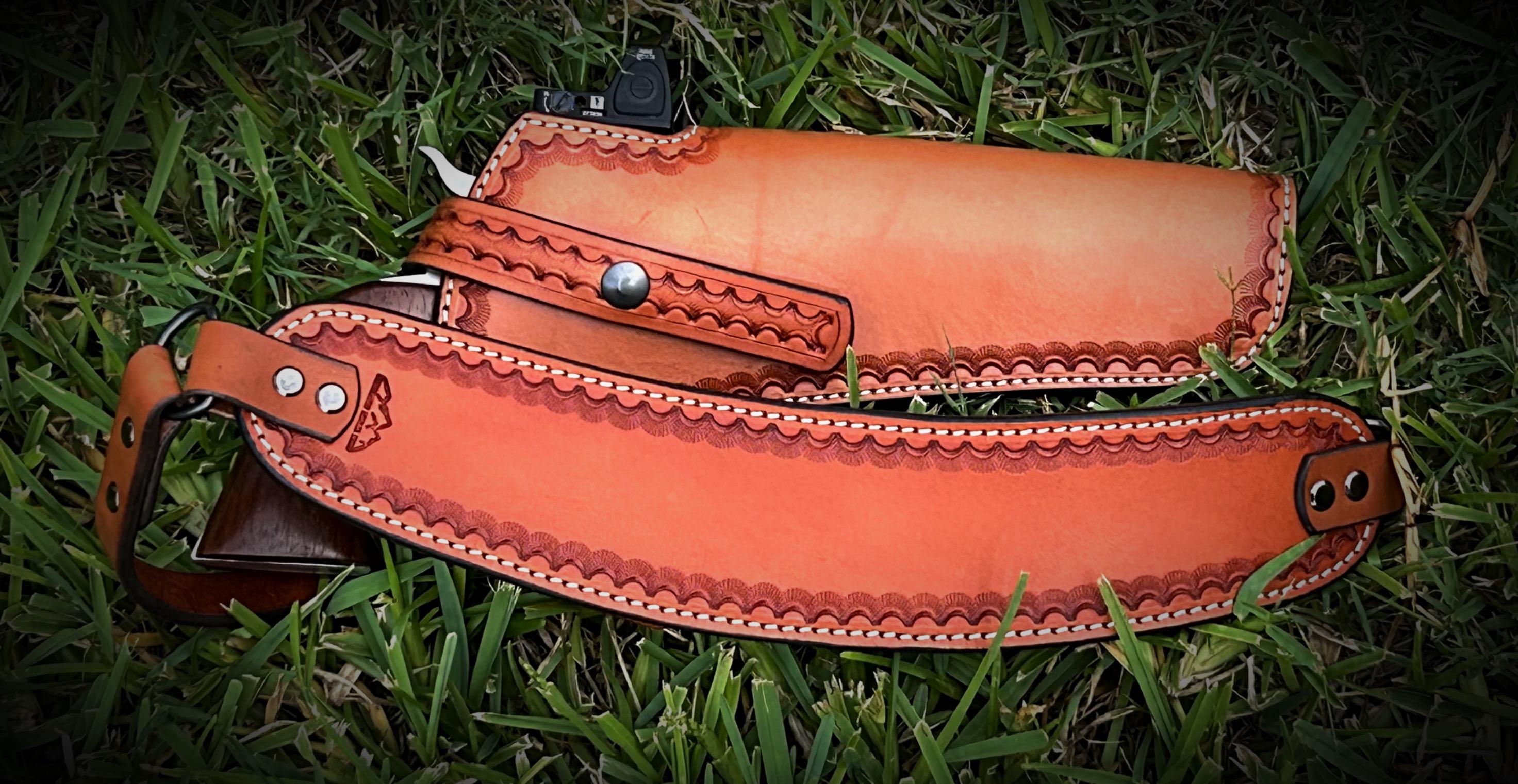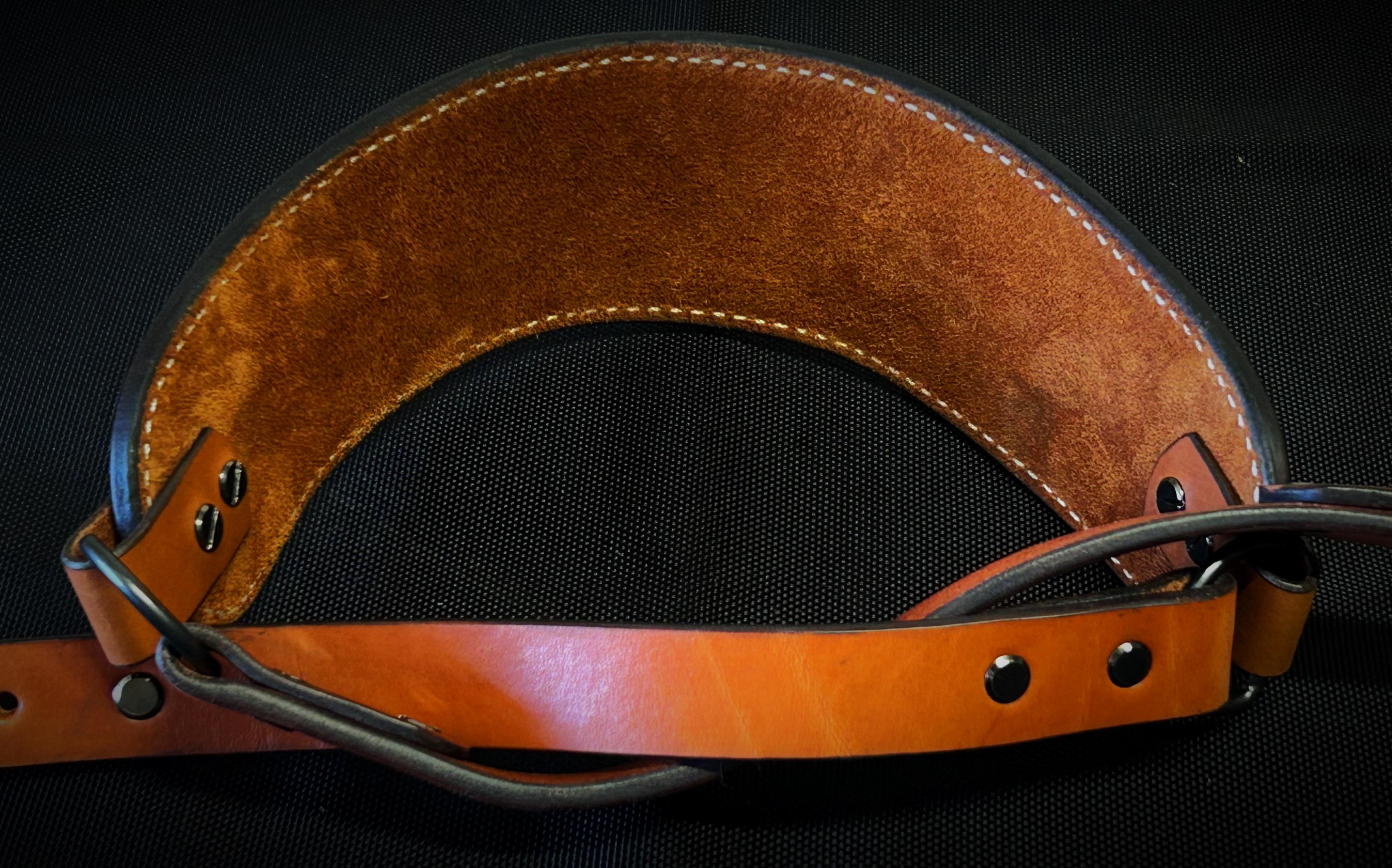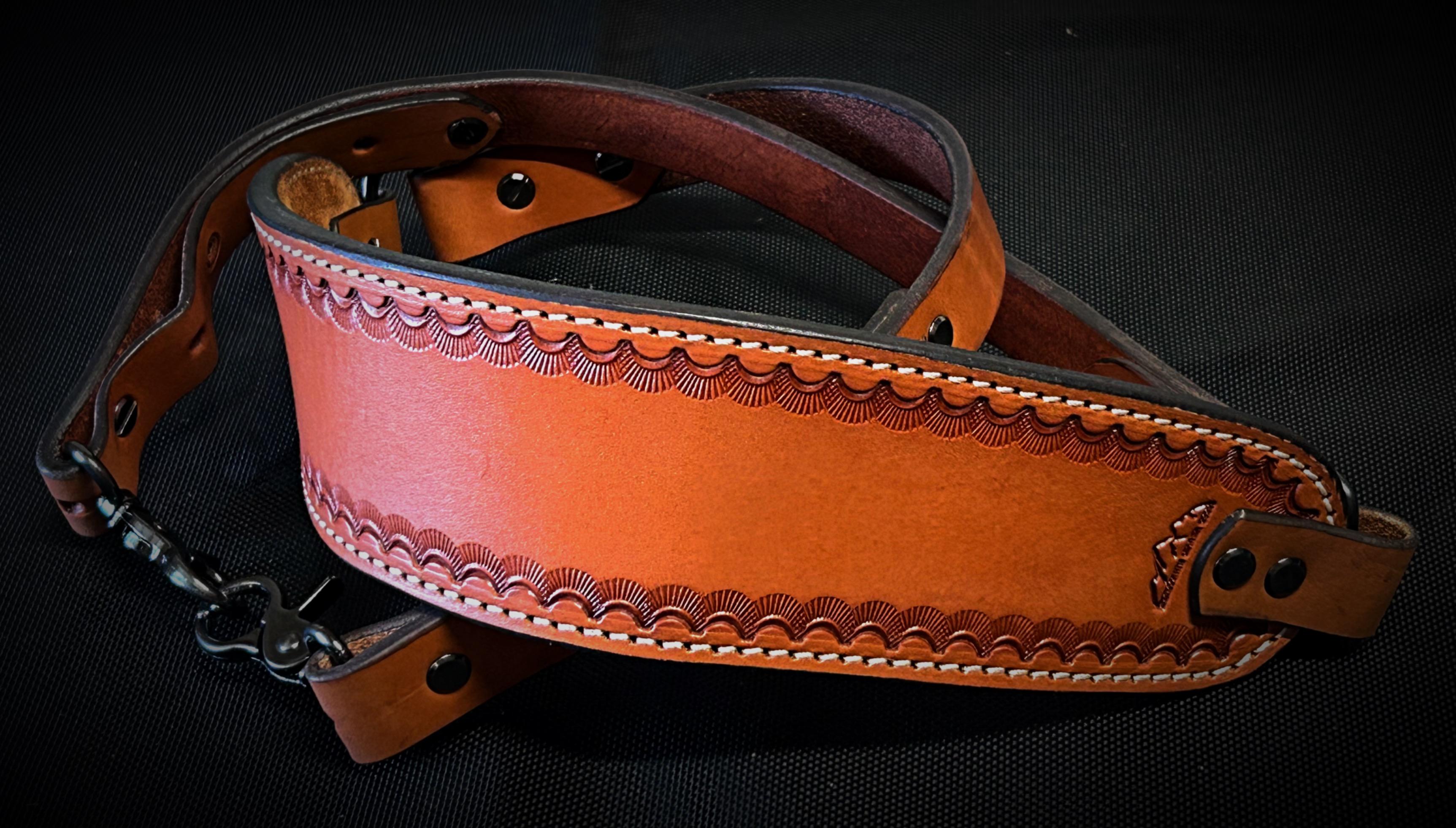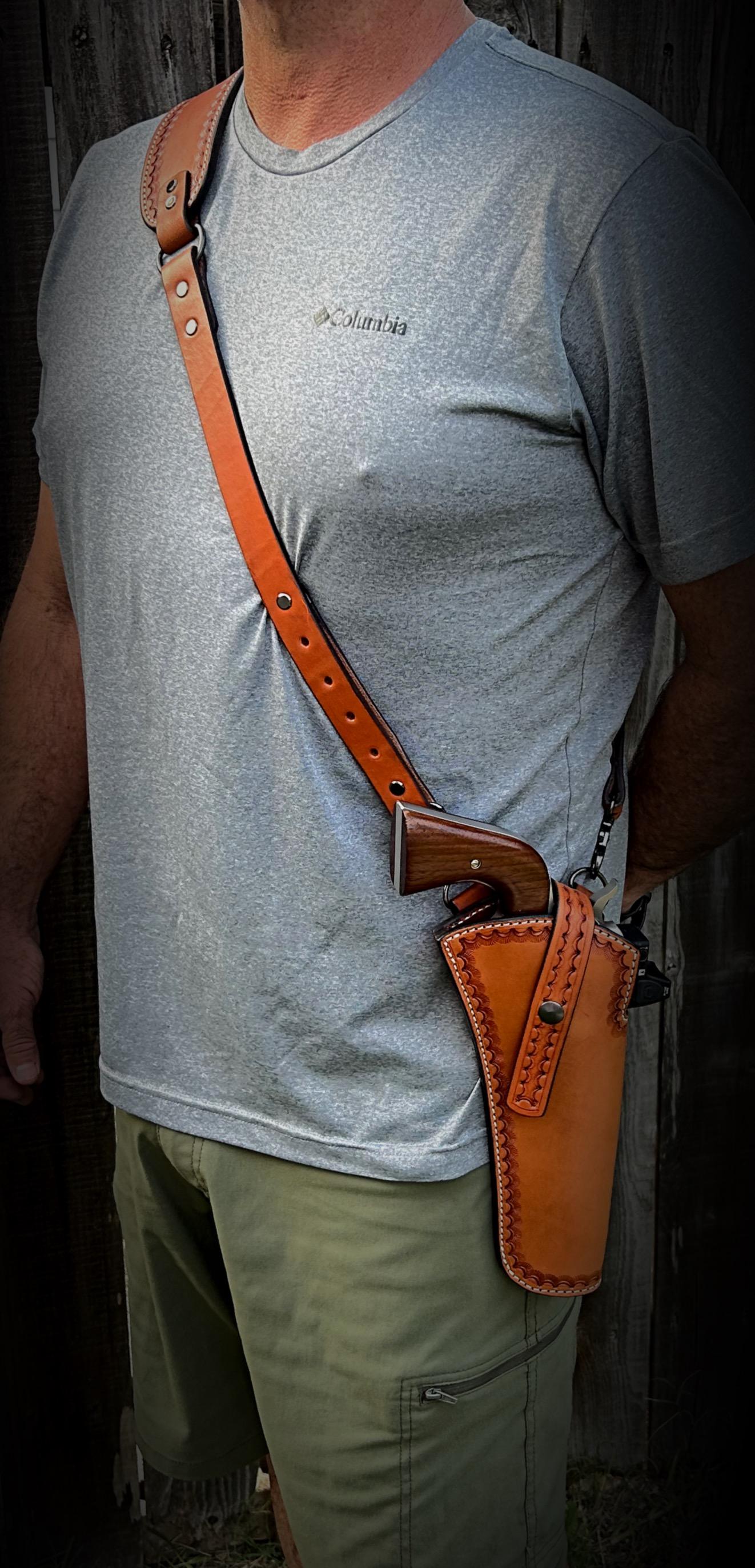All Activity
- Past hour
-
Quite nice. Very skillful hand with those stamping tools, too.
- Today
-
Hello Can you help? I've looked extensively on here, YT and Google but can't find what I'm looking for. Does anyone have photos, a link to a video or scans from a manual of the needle making the loop and picking up the bobbin thread. I have an original instruction manual but there are no images, just a place the shuttle in the machine, hold the needle thread, turn the handle and basically away you go! Starting to wonder if there is something not quite right with my machine. I am familiar with boat shuttles (have an Atlas and several domestic bullet shuttle machines), but this beastie is just confounding us ! Any help will be gratefully received. Thanks .... PS I requested to join the FB Pearson #6 group - waiting to be let in !
-
Being in Australia getting dies made by Weaver isn't really an option. I'd like to have a go at making dies but so far haven't been able to source rule steel here in Oz.
-
Yeah I got 1 of the vevor's about a year ago. It does everything i need it to do. I also had some custom dies made by weaver & i highly recommend them if ever looking for cutter dies.
-
Hello. I'm looking for wider bag/oblong punches for large harness buckles. Does anyone happen to know where I can find anything? I have all tje oblong punches in lengths I need. However I'm now working with heavier harness leather and large buckles so I need larger buckle slots. Thanks in advance Brian Merrick
-

My take on the Alessi PCH IWB
Stetson912 replied to Stetson912's topic in Gun Holsters, Rifle Slings and Knife Sheathes
Thanks, it's a fun little thing to make too. It does use a lot of leather though. Rather, with it being one piece it requires a larger piece. But, if you make the loops separate and stitch them on, it would free up some space on the hide. But, Sticking with tradition ya know. -
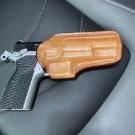
My take on the Alessi PCH IWB
larry1096 replied to Stetson912's topic in Gun Holsters, Rifle Slings and Knife Sheathes
Very nice work-worthy of 'Uncle Lou's' design. Larry -
Is anyone there now taking classes? Is anyone planning on going to the show this weekend? I'm heading to Waco on Wednesday. Hope to see old friends and make new ones. Link to show info, sponsored by the Leathercrafters Journal.
-
This is an interesting one for me. A unique design I haven't seen before and therefore had to figure out. Lou alessi designed this to be made from one piece of leather. It utilizes an 's' curve that creates an arch along the slide side. This keeps the mouth open and prevents collapse. Really a genius design, and one you seldom see.
-

Removing molding marks?
Stetson912 replied to larry1096's topic in Gun Holsters, Rifle Slings and Knife Sheathes
That's looking pretty good. Leather weight is also a factor. I believe jason uses 7/8oz. As for retention, the trigger area and ejection port are the only places retention can be achieved with molding, so focus on those areas. The rest is, as you said, is more for looks -

Removing molding marks?
Stetson912 replied to larry1096's topic in Gun Holsters, Rifle Slings and Knife Sheathes
Jason is a great holster maker. His work is top notch. He does his molding by hand. Molding is an art form in itself. Learn leather has a video of him molding a holster in detail if memory serves. But, In a nutshell; proper casing, smooth tools, and progressive molding. Start with the larger molding tools and work down to finer tools as the leather dries. As it dries it holds more detail but be careful, if you slip thats it, leather is marked. Burnishing in my experience comes as a result of rubbing the leather with something that causes friction, like a wood handle or slicker that isn't completely polished and smooth. Popular molding materials are bone/antler, stainless steel, and smooth plastic. But really anything smooth is your friend. Look up Eric larsen (of hbe leatherworks) youtube. He has a few short videos of holster molding that are useful too. -
Looks a bit chunky to me. I think it's cuz your leather is a bit on the thinner side. The second photo looks like your holes are getting blown out too, which can happen with improper needle feeding or overly large thread or dull stitching chisels. Thicker leather will allow you to seat your stitches better with more tension. I'd try .8mm or .7mm and see how that works for you.
-
Thanks for the replies, I think I’ll go ahead and get that Big Red just in case. Never underestimate my ability to break things.
-
I refurbished one of those Model 127s in 2019 and I got it to sew with #92 bonded nylon thread using a #19 or 20 leather point needle, into a 10-12 ounce piece of bridle leather, at 5 to the inch! I sold the machine for $200 to the first person who asked about it. Here is a YouTube video showing the author cleaning her Singer Model 99. The details should be the same for your machine, except for the different shuttle type.
-
Basically a manual clicker press, I saw one on youtube and thought that looked useful. Amazon (Aus) had what was an older version with needle bearings on the shaft end for what was a good price ($178) and by signing up to their app (which I won't use again as I prefer using my computer) I got another $20 0ff. $158 delivered was too good to pass up. It arrived today, well packed, and I forgot how heavy 50lbs is!!! This thing is built like a tank! As a bonus it is the later model with big bearings on the shaft ends. So, the base and pressure plate are made from 5/8"/16mm plate steel, the main support bar is 1 1/4"/30mm bar and the upright bolts are 3/4"/17mm rod. The end bearings are 1 3/4"/45mm diameter and the pressure plate 10.2" x 4.7"/260 x 120mm. I'm glad I didn't get a bigger one because of the added weight. It has a travel of 1/2"/12mm and claimed downward pressure of between 1 - 1 1/2 ton, depending on which article you read. A quick trial of the only clicker die I have handy (lent my other ones to a mate) and it went through the leather like butter! Should be good for imprinting things too. Me happy.
-
My thoughts and experience. 1 - You can’t change the overall blade angle much with stropping compounds even if you use black emery. If You can do that, you have my respect for perserverence. 2. You can however round over a blade edge very easily using mild compound on a strop and either a) - not keeping a constant angle or rolling that angle b) keeping the angle too high or c) using a soft strop 3. Use a mild compound on a firm surface like card stock, file folder, or hard roll horsebutt for stropping a swivel knife. And don’t do it a ton. A few strokes to clean but much more than will violate point #2 above. I like purple compound but green or white is OK. Whatever you’ve got that isn’t black or red. Round and cutting knives can use a “softer” strop like vegan leather because a little convexing of the edge can make a “Moran edge” that is durable. On the other hand Swivel knives I feel need a flat edge all the way out for easier and cleaner cutting. That means a harder strop and less aggressive compound. I’ve had a bunch of swivel knife blades through here in all tiers of quality and use. I probably have 75 blades right now. When I sharpen one I set the blade up in a jig and mark the facets with fluid. . I can guarantee that more than 95% of them will not scratch the marking fluid off the very edge intially because the edges have been rounded from in inconsistent angle on an abrasive maybe but mostly due to over stropping. I go back up the grits to something coarser to flatten the facets and bring back the angle and then run through my grits to 5000. Then I strop with the jig at 1 to 1.5 degrees higher with purple compound to take off the burr edge. It’s literally almost just a touch on each side for the bur. By hand, there are a few jigs I like and the Big Red you mentioned is sure one of them. I think hitting a blade on 2000 if needed and then 5000 wet/dry with a jig and a light strop as above to maintain is better to maintain than stropping the crap out of them like has been recommended by a lot of people the last 50 years. My thoughts for what it’s worth.
-
New offering. I’ve had requests for a true bandolier style rig so about a year ago I started working on one. After much field testing, here it is! Fully adjustable, non slip shoulder strap, and works perfectly with my existing chest rig holsters (as a conversion). Please ignore the model-he’s rough around the edges, but works cheap…
-
Yes, when my eyesight was good enough. When I was a member we had access to all military small arms (semi and full auto), ammo and training. Back then the DCRA competitions were limited to military ( commonwealth countries only), Canadian police forces and DCRA members. The DCRA was limited to military, ex military or reservists and police. All firearms and ammo had to be military compliant and no scopes. I am surprised you managed to get across the border without some of those pretty silver brackets. kgg
- Yesterday
-
The motor howls---I suspect it's a bearing inside the gearbox that has a pitted race. I have not been able to get the front cover off the gearbox. Next time I'll tap it with a sledgehammer to knock it loose. The VFD has a noisy fan too, but the motor howl is the bigger problem.
-
Impressive, lots of torque there. I doubt if overheating is likely to be a problem for home/hobby use. It sounded pretty noisy, or is that just an overly sensitive mic?
-
You'd have to do a lot of stropping with a coarse abrasive to significantly change the blade geometry! Eventually though it would need touching up on an oilstone.
-
I suspect our firearm regulations make Canada's look good! I shoot primarily Single Action so reload pistol cartridges (.38sp and .44-40), the Dillon is for the .38 as progressive presses tend to destroy the thin-walled .44-40, I use a Lee turret press for those. I modified the Dillon to use a 4-tube Lee case feeder and a 4-tube boolit feeder, plus a vibrator on the powder hopper as I was getting uneven powder loading with the DuPont powder I got hold of. Bob, I usually have the door open unless it's raining but you're right, it's probably the last remaining bit of free space, I'll have to give it some thought, I should be able to use it for something. PVC tubes for leather rolls might work......
-
That looks great, I wouldn't have known it was a home-made job if you hadn't said so.
-
Is it possible to change the geometry of a swivel knife blade just by stropping it? My knife came with a fantastic blade and I would hate to alter it to an undesirable angle. I probably don’t strop it as often as I should and when I do it’s only stropped two or three times on each side. Still, if need be I could get something like the Big Red by Chuck Smith to correct the angle. Thanks
-
Thanks! I've been enjoying it 🤠 None so far. My duty cycle is quite low in general as I'm typically spending much more time thinking about sewing and planning the design than I am actually stitching. The only instances where I can see a good use for going ultra slow is at the start of a seam (when I'm scrambling to make sure I've got the thread held down while also driving one-handed), and at a corner or end of a seam when I might slow down to make sure I bury the needle when I let off the gas. The middle sections, especially of straight seams, warrant higher speed else one gets bored. I conjecture that a few seconds of ultra-low speed at the beginning and end of each seam, even if they do cause extra heat (I'm unclear on this point) won't cause enough extra heat in those few seconds to cause any trouble---the heat will be absorbed by the mass. As far as what could potentially overheat, and how to measure & test that, I'm open to suggestions. VFD This VFD has a temperature sensor for itself, and you can specify what temperature is too hot and it will disable at that temperature. Motor This motor does not have a temperature sensor that I know of. I could imagine nesting a thermistor between the coils of the stator and running the thermistor wires out through the electrical box along with the power wires. I have not adjusted the volts-per-hertz settings at all yet, but that's worthy of testing out. I wish this VFD had a setting for overall reducing the amount of current (torque) going to the motor, but I haven't found a setting for that yet.


